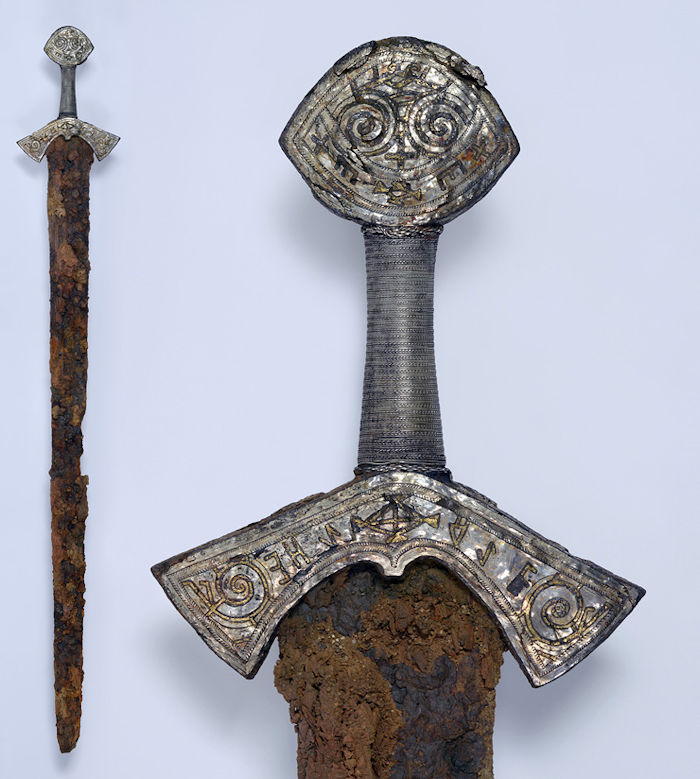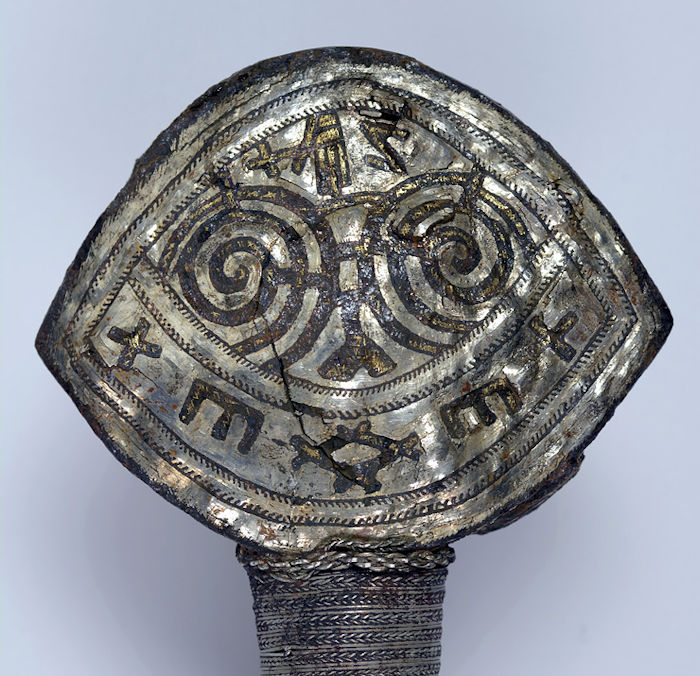Mystery Of The Langeid Viking Sword And Its Undeciphered ‘Magical’ Inscriptions
Jan Bartek - AncientPages.com - Some years ago, one of the most extraordinary swords was discovered in a Viking burial ground in Langeid, Bygland, Setesdal, in southern Norway. All ancient swords are unique in different ways, but this one is unique from the late Viking Age, embellished with gold, inscriptions, and other ornamentation.
The sword from grave 8 at Langeid in Setesdal valley is 91 cm long, almost completely preserved. There is only a few centimeters missing from the tip of the blade. Museum number C58882/3. Credit: Vegard Vike, Museum of Cultural History, UiO.
When the Langeid Viking sword was displayed for the first time in the exhibition 'Take it Personally' at the Historical Museum in Oslo, it caused some sensation.
Vikings And Their Swords
"The sword must have belonged to a wealthy man in the late Viking Age. But who was he, and what magic inscriptions are set into the decoration – in gold? Was the owner of the sword in the Danish King Canute's army when it attacked England in 1014-15?
Historians know Vikings had a special relationship with their swords." 1
A sword was a deadly weapon and symbol of power – jewelry for a man with magical properties. The sword gave power to the warrior, but the warrior's strength could also be transferred to the blade. That is how they were bound together: man and weapon, warrior and sword.
"The loss of a sword was a catastrophe for a Viking. Vikings believed a man and his sword were bound together. The sword gave power to the warrior, but the warrior's strength could also be transferred to the blade.
A Viking sword was a deadly weapon and symbol of power. It was jewelry for a man, with 'magical properties.' How the Vikings named their sword was a matter of heritage. Swords were given names and passed from father to son for generations. Swords were extremely important to ancient Vikings, but these weapons were expensive to produce, and only the richest warriors and chiefs could afford a sword." 2
Why Was The Langeid Viking Sword Unique?
Archaeologists from the Museum of Cultural History in Oslo discovered knew right away they had come across something unusual and precious.
Credit: Museum of Cultural History, UiO
"Even before we began the excavation of this grave, I realized it was something quite special. The grave was so big and looked different from the other 20 graves in the burial ground. In each of the four corners of the grave, there were post holes," said excavation leader Camilla Cecilie Wenn of the Museum of Cultural History.
The post holes reveal that there was a roof over the grave, which is a sign that the grave had a prominent place in the burial ground. But when they dug down in the coffin at the bottom of the grave, there were few traces of gifts for the afterlife, only two small fragments of silver coins. The coins were from northern Europe; one was probably from the German Viking Age, judging by how it was embossed, while the other was a penny minted under Ethelred II in England dating from the period 978-1016.
"But when we went on digging outside the coffin, our eyes really popped. Along both sides, something metal appeared, but it was hard to see what it was. Suddenly a lump of earth fell to one side so that the object became clearer. Our pulses raced when we realized it was the hilt of a sword! And on the other side of the coffin, the metal turned out to be a big battle axe. Although the weapons were covered in rust when we found them, we realized straight away that they were special and unusual. Were they put there to protect the dead person from enemies or to display power?"
Dating of charcoal from one of the post holes shows that the grave is from around the year 1030, at the very end of the Viking Age.
"And that fits in well with the discovery of the English coin."
The sword must have belonged to a wealthy man who lived in the late Viking Age. The sword is 94 cm long; although the iron blade has rusted, the handle is well preserved. It is wrapped with silver thread, and the hilt and pommel at the top are covered in silver with details in gold, edged with a copper alloy thread," said project leader Zanette Glørstad.
Close-up photo of the pommel. Inlays of gold wire makes up the central line in each symbol. The gold is framed by a copper wire that is now black. All the intermediate surfaces have been filled in with parallel silver wires. At the top a hand holding a cross is visible. Photo: Vegard Vike, Museum of Cultural History, UiO.
also found remnants of wood and leather on the blade. They must remain from a sheath to put the sword in," explained curator Vegard Vike. He has had the challenging task of cleaning up the handle and preserving the sword.
The Langeid sword is decorated with large spirals, various combinations of letters, and cross-like ornaments. The letters are probably Latin, but what the letter combinations meant is a riddle.
"It is still a mystery as to exactly what the symbols on the sword's hilt tell us. Many of them bear a Christian message with different variants of the cross. Latin letters are among the most complex to interpret, but one may suspect that they are meaningful abbreviations with a Christian message. They could be anything from Bible verses to worship of Christ in Greek or Latin, somewhat equivalent to Christograms. A cross or X may stand for Xristos (Christ). R occurs in several places and may stand for Rex (King). H only appears once, and its meaning is rather uncertain. An E sign appears in several places, both inverted and not, but also lying like a W. The meaning of the E sign is unclear.
A sign that at first sight might remind one of a rune is now considered to be possibly a stylized S. This sign appears, for example, at the top of the pommel in combination with a hand holding a cross. The hand may represent the hand of Jesus or God. The cross in hand combined with the S sign can, if interpreted generously, be read as Xristos Salvator (Christ the Saviour) but would then represent a mixture of Greek and Latin. Symmetry in the rendering of characters appears to have been important. Letters are even written in inverted form in many places in an effort to achieve this, but it is not carried through consistently." 3
At the top of the pommel, one can see a picture of a hand holding a cross. That's unique, and scientists don't know of any similar findings on other swords from the Viking Age.
Why Was The Langeid Sword Covered With Christian Symbols In A Pagan Burial?
Scientists were puzzled this particular Viking sword with Christian symbolism ended up in a Pagan burial. Maybe this is not surprising, considering Vikings sometimes mixed Christian and Norse symbols. We shouldn't forget, for example, that Christian Viking King Harald Bluetooth did carry Thor's hammer as an amulet.
The sword's design, the symbols, and the precious metal used all make it clear that this was a magnificent treasure, probably produced abroad and brought back to Norway by a very prominent man," added Camilla Cecilie Weenn.
14-th-century portrait of Cnut the Great. Credit: Public Domain
"The way swords are referred to in the sagas suggests that the blade is an essential bearer of the warrior's identity. A sword reveals the warrior's social status, position of power and strength. The sagas also tell us that gold had a unique symbolic value in Norse society. In Norse literature, gold represented power and potency.
Gold is rarely found in archaeological material from Viking Period, and then, too, it stood for power and potency. It indicates that gold had considerable economic and symbolic value. Based on the descriptions in the literature, we can say that the sword was the male jewelry par excellence of the Viking Age," said Hanne Lovise Aannestad, the author of a recent article on ornate swords from the days of the Vikings.
The sagas emphasize the importance of the ornate sword. Swords could have hilts of gold with ornamentation and magical runes. The mythical tales tell of magical blades forged by dwarfs. The creation of myths around the art of the blacksmith and the making of high-quality swords may be related to the fact that few people mastered the art. The production of metal objects of high quality may have been a form of hidden knowledge unavailable to most people. It gave the objects a magical aura.
"In Mediaeval literature, swords are considered aesthetic, powerful, and magical objects. The many similarities between the descriptions of swords in Norse and Mediaeval literature suggest that the splendor of the sword in the latter had roots in the Viking notions of the symbolic power, magic, and ritual aspects of the ornate sword. The Viking Age was a period of great social upheaval. At times like that, certain symbolic objects may play an important role in negotiating social positions. There is much to suggest that these magnificent swords were such objects, reflecting the status and power of the warrior and his clan," said Hanne Lovise.
The axe found in the same grave has no gold decoration. But the shaft is coated with brass, and it may well have flashed like gold when the sun shone. Such shaft coatings are very rare in Norway. But a number of similar battle axes have been found in the River Thames in London. That makes the axe particularly interesting. The dating of the axe from Langeid shows that it belongs to the same period as the axes found in the Thames. There was a long series of battles along the Thames in the late 10th and early 11th centuries.
The Danish King, Sweyn Forkbeard, and his son Canute led their armies against the English King in the battle for the English throne. Even the Norwegian King Olav (Haraldsson) the Holy was involved in the attack on London in 1009. The men under the Danish King were from all over Scandinavia. Did the axes get lost in the Thames during the numerous skirmishes, or did the victors throw them in the river?"
There are many unanswered questions.
Did The Sword Belong To A Viking From King Canute's Army?
Further down the Setesdal Valley, there is a runic stone, which says: "Arnstein raised this stone in memory of Bjor, his son. He found death when Canute "went after" England. God is one." (Translated from the Old Norse). The text probably refers to King Canute's attacks on England in 1013-14. The stone was likely erected just after the incursions by a father whose son never returned home. A written source from the 12th century states that King Canute's closest army had to meet specific requirements. Soldiers had to honor the King, belong to the leading families in society, and provide their own gilded axes and sword hilts.
The Langeid sword King Canute has approved, probably also the axe. The sword was made outside Norway, and an Anglo-Saxon origin is entirely possible. The axe is similar to those found in the Thames, especially in its brass coating. The grave with the sword also contained the only coin found in Langeid from the Anglo-Saxon region, which increases the possibility that the dead man had a particular connection to the events in England.
"It's quite possible that the dead man was one of King Canute's hand-picked men for the battles with King Ethelred of England. Seen in connection with the runic stone further down the valley, it is tempting to suggest that it is Bjor himself who was brought home and buried here. Another possibility is that his father Arnstein only got his son's magnificent weapons back and that, precisely for that reason, he decided to erect a runic stone for his son as a substitute for a grave. When Arnstein himself died, his son's glorious weapons were laid in his grave. The death of his son must have been very tough on an old man. Perhaps their relatives honored both Arnstein and Bjor by letting Arnstein be buried with the weapons with such a heroic history," said Zanette Glørstad.
The runic stone dates from the same period as the final phase of the burial ground and testifies that Christianity is about to take root in Norwegian society. It is the oldest runic stone in Norway that refers to Christianity. Could this also explain why the weapons were placed outside the coffin? In a transitional period, people may have chosen to use both pagan and Christian elements in a funeral. The Langeid grave is one of the last pagan funerals we know of from Norway and marks both the greatness and the end of the Viking Age."
Written by Jan Bartek - AncientPages.com Staff Writer
Updated on June 3, 2023
Expand for referencesCopyright © AncientPages.com All rights reserved. This material may not be published, broadcast, rewritten or redistributed in whole or part without the express written permission of AncientPages.com
More From Ancient Pages
-
 Blood Of St. Januarius – One Of The Most Remarkable Christian Relics
Artifacts | Jun 27, 2017
Blood Of St. Januarius – One Of The Most Remarkable Christian Relics
Artifacts | Jun 27, 2017 -
 Neolithic Boats At La Marmotta Reveal People Used Advanced Nautical Technology 7,000 Years Ago
Archaeology | Mar 22, 2024
Neolithic Boats At La Marmotta Reveal People Used Advanced Nautical Technology 7,000 Years Ago
Archaeology | Mar 22, 2024 -
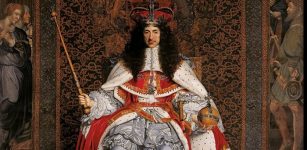 On This Day In History: King Charles II Is Restored To The Throne Of England, Scotland And Ireland – On May 29, 1660
News | May 29, 2016
On This Day In History: King Charles II Is Restored To The Throne Of England, Scotland And Ireland – On May 29, 1660
News | May 29, 2016 -
 Oldest Door Lock Comes From Ancient Egypt
Ancient History Facts | Jun 27, 2018
Oldest Door Lock Comes From Ancient Egypt
Ancient History Facts | Jun 27, 2018 -
 Ancient Monuments The World Is Not Allowed To See – Reason For Denial? – Part 1
Featured Stories | Aug 24, 2020
Ancient Monuments The World Is Not Allowed To See – Reason For Denial? – Part 1
Featured Stories | Aug 24, 2020 -
 Traces Of An Unknown Ancient Race Of Winged Beings And Other Mysterious Creatures Discovered In Japan
Civilizations | Nov 30, 2018
Traces Of An Unknown Ancient Race Of Winged Beings And Other Mysterious Creatures Discovered In Japan
Civilizations | Nov 30, 2018 -
 Unexpected Historical Discovery: Remains Of Famous Sami Woman Recovered
Archaeology | Aug 22, 2022
Unexpected Historical Discovery: Remains Of Famous Sami Woman Recovered
Archaeology | Aug 22, 2022 -
 Colonnaded Hall Decorated With Captivating Frescoes Unearthed At Pompeii
Archaeology | Dec 30, 2024
Colonnaded Hall Decorated With Captivating Frescoes Unearthed At Pompeii
Archaeology | Dec 30, 2024 -
 Chickens Were Introduced To Britain, Mainland Europe, And Northern Africa Later Than Previously Thought
Archaeology | Jun 13, 2022
Chickens Were Introduced To Britain, Mainland Europe, And Northern Africa Later Than Previously Thought
Archaeology | Jun 13, 2022 -
 Ancient Egyptian Tombs With Stunning Trove Of Artifacts And Human Remains Unearthed In Saqqara
Archaeology | Jan 17, 2024
Ancient Egyptian Tombs With Stunning Trove Of Artifacts And Human Remains Unearthed In Saqqara
Archaeology | Jan 17, 2024 -
 Secret High-Tech Knowledge Hidden In Ancient Manuscripts And The Mysterious Seven Sky Kings
News | Aug 24, 2021
Secret High-Tech Knowledge Hidden In Ancient Manuscripts And The Mysterious Seven Sky Kings
News | Aug 24, 2021 -
 Enigmatic Newport Tower – Built By The Vikings, Knights Templar, Freemasons Or Someone Else?
Featured Stories | Aug 1, 2024
Enigmatic Newport Tower – Built By The Vikings, Knights Templar, Freemasons Or Someone Else?
Featured Stories | Aug 1, 2024 -
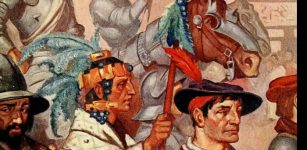 On This Day In History: Spanish Conquistadors Led By Hernan Cortés Entered The Aztecs Capital Tenochtitlán – On Nov 8, 1519
News | Nov 8, 2016
On This Day In History: Spanish Conquistadors Led By Hernan Cortés Entered The Aztecs Capital Tenochtitlán – On Nov 8, 1519
News | Nov 8, 2016 -
 DNA Reveals – One Of Sunken Warship Vasa’s Crewmen Was A Woman
Archaeology | Apr 4, 2023
DNA Reveals – One Of Sunken Warship Vasa’s Crewmen Was A Woman
Archaeology | Apr 4, 2023 -
 Hidden Ancient Underground Tomb Discovered In Petra May Solve The Mystery Of The Nabataean Kingdom
Places | Oct 18, 2024
Hidden Ancient Underground Tomb Discovered In Petra May Solve The Mystery Of The Nabataean Kingdom
Places | Oct 18, 2024 -
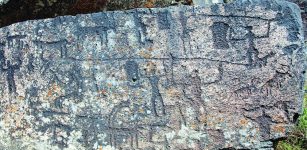 15 Prehistoric Rock Paintings Discovered Near Ancient Armenian City Of Ani
Archaeology | Dec 14, 2015
15 Prehistoric Rock Paintings Discovered Near Ancient Armenian City Of Ani
Archaeology | Dec 14, 2015 -
 First Time A Meteorite Killed A Person In Known History Revealed In Old Documents
Archaeology | Apr 29, 2020
First Time A Meteorite Killed A Person In Known History Revealed In Old Documents
Archaeology | Apr 29, 2020 -
 Ancient Mystery Of The American Southwest – Secrets Of The Cliff Dwellers – Part 1
Civilizations | Jul 23, 2018
Ancient Mystery Of The American Southwest – Secrets Of The Cliff Dwellers – Part 1
Civilizations | Jul 23, 2018 -
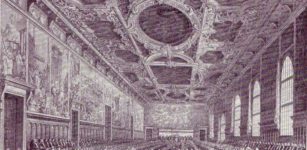 Ancient Societies Ruled By Ruthless Dictators – Collapsed
Civilizations | Oct 18, 2020
Ancient Societies Ruled By Ruthless Dictators – Collapsed
Civilizations | Oct 18, 2020 -
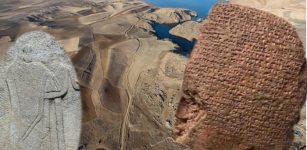 3,300-Year-Old Hittite Cuneiform Tablet Found In Büklükale Deciphered!
Archaeology | Apr 2, 2024
3,300-Year-Old Hittite Cuneiform Tablet Found In Büklükale Deciphered!
Archaeology | Apr 2, 2024

